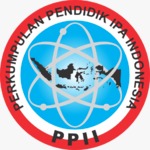E-LKPD Berbasis STEAM Dengan Teknologi Augmented Reality (AR) : Upaya Melatih Berpikir Kreatif
DOI:
https://doi.org/10.29408/kpj.v8i3.28414Keywords:
Augmented Reality, Creative Thinking, STEAM approachAbstract
T
This research aims to develop and convey the feasibility and user response to E-LKPD assisted by the Augmented Reality (AR) application with a STEAM approach to train creative thinking skills (creative thinking) of class XII students. The research uses the Research and Development (R&D) method with the development of the ADDIE (Analysis, Design, Development, Implementation, Evaluation) model. The research subjects consisted of material validation by 3 expert validators, media validation by 3 expert validators, teacher responses by 2 educators, and student responses by 68 class XII students at SMA 2 Perintis Bandar Lampung and SMAN 01 Tanjung Raya Mesuji Lampung. Validation results by material and media experts show a very high level of feasibility, with percentages of 89% and 86% respectively. The response from educators and students was also very positive regarding the attractiveness and feasibility of the E-LKPD being developed, with trial results reaching 91% for educators, 88% for small group trials, and 86% for field trials. Based on these results, it can be concluded that the development of AR-assisted E-LKPD with a STEAM approach is declared feasible and interesting as physics teaching material in class XII.
References
Bakali U., Killawala C., Monteagudo E., Dikici E., Deo SK., & Daunert S. (2024). Exhaled breath analysis applications for evaluating occupational and environmental exposures.. TrAC - Trends in Analytical Chemistry, 177, 117787.
https://doi.org/10.1016/j.trac.2024.117787
Bikov A., Paschalaki K., Logan SR., Horváth I, Kharitonov SA, Barnes PJ., Usman OS., & Paredi P. (2013). Standardised exhaled breath collection for the measurement of exhaled volatile organic compounds by proton transfer reaction mass spectrometry. BMC Pulmonary Medicine, 13(43), 1-7.
http://www.biomedcentral.com/1471-2466/13/43
Binson V.A., Akbar R., Thankachan N., & Thomas S. (2022). Design and construction of a portable e-nose system for human exhaled breath VOC analysis. Journal of Mater Today Proc, 58(1), 422–427. https://doi.org/10.1016/j.matpr.2022.02.388
Budianto A. (2022). A propanol gas measurement system using a quartz crystal microbalance as a mass sensor. Journal of Environmental Engineering and SustainableTechnology, 9:(2), 70–74. http://dx.doi.org/10.21776/ub.jeest.2022.009.02.4
Cazzola M., Andrea S., Rosamaria C., Alberto B., Eugenio M., Luigino C., Paola R., Chiara C., Josuel O., Roberto P., Corrado D.N., & Arnaldo D.A. (2015). Analysis of exhaled breath fingerprints and volatile organic compounds in COPD. Journal of COPD Research and Practice, 1(7), 1-8.
https://doi.org/10.1186/s40749-015-0010-1
Chen T., Liu T., Zhao H., & Chen Q. (2021). Exhaled breath analysis in disease detection. Clinica Chimica Acta, 515, 61-72.
https://doi.org/10.1016/j.cca.2020.12.036
Cikach FS., & Dweik RA. (2012). Cardiovascular Biomarkers in Exhaled Breath. Progress in Cardiovascular Diseases, 55(1), 34-43.
https://doi.org/10.1016/j.pcad.2012.05.005
Hashoul D., & Haick H. (2024). Sensors for detecting pulmonary diseases from exhaled breath. European Respiratory Review, 28(152), 1-13.
https://doi.org/10.1183/16000617.0011-2019
Lee S., Kim M., Ahn BJ., & Jang Y. (2023). Odorant-responsive biological receptors and electronic noses for volatile organic compounds with aldehyde for human health and diseases: A perspective review. Journal of Hazard Mater, 455, 131555. https://doi.org/10.1016/j.jhazmat.2023.131555
Maloča VI., Turkalj M., Nogalo B., Bulat LS., & Plavec D. (2017). Diagnostic value of a pattern of exhaled breath condensate biomarkers in asthmatic children. Allergologia et Immunopathologia (Madr), 45(1),2–10. https://doi.org/10.1016/j.aller.2016.05.001
Paleczek A., & Rydosz A. (2024). The effect of high ethanol concentration on E-nose response for diabetes detection in exhaled breath: Laboratory studies. Sensors and Actuators B: chemical, 408, 1-10.
https://doi.org/10.1016/j.snb.2024.135550
Scarlata S., Pennazza G., Santonico M., Pedone C., & Antonelli IR. (2015). Exhaled breath analysis by electronic nose in respiratory disease. Expert Rev Mol Diagn, 15(7), 933-956.
https://doi.org/10.1586/14737159.2015.1043895
Vasilescu A., Hrinczenko B., Swain GM., & Peteu SF. (2021). Exhaled breath biomarker sensing. Biosensors and Bioelectronics, 182, 113193.. https://doi.org/10.1016/j.bios.2021.113193
Widhowati AA., Wardoyo AYP., Dharmawan HA., Nurhuda M., & Buadianto A. (2021). Development of a portable volatile organic compounds concentration measurement system using a CCS811 air quality sensors. IEEE Xplore, 1-5.
https://doi.org/10.1109/ISESD53023.2021.9501642
Wijsman PC., Goorsenberg AWM., d’Hooghe JNS., Weersink EJM., Fenn DW., Maitland van der Zee AH., Annema JT., Brinkman P., & Bonta PI. (2024). Exhaled breath analyses for bronchial thermoplasty in severe asthma patients. Respiratory Medicine, 225, 1-10 https://doi.org/10.1016/j.rmed.2024.107583
Wu G., Du H., Pakravan K., Kim W., Cha YL., Chiang ST., Majid B., Xinyu Z., Sun HK., Xuejun P., & Dong JK. (2023). Polyaniline/Ti3C2Tx functionalized mask sensors for monitoring of CO2 and human respiration rate. Journal Chemical Engineering, 475(1),146228. https://doi.org/10.1016/j.cej.2023.146228
Yani A., Wardoyo AYP., Anggraeni D., & Budianto A. (2024). Development of a Measurement system of Ethanol Gas Based on TGS-2600, TGS-2603, and MQ-138 sensors. AIP Conference Proceedings, 3236(1), 1-6.
Downloads
Published
Issue
Section
License
Copyright (c) 2024 Kappa Journal

This work is licensed under a Creative Commons Attribution-ShareAlike 4.0 International License.
Semua tulisan pada jurnal ini menjadi tanggungjawab penuh penulis. Jurnal Kappa memberikan akses terbuka terhadap siapapun agar informasi dan temuan pada artikel tersebut bermanfaat bagi semua orang. Jurnal Kappa dapat diakses dan diunduh secara gratis, tanpa dipungut biaya, sesuai dengan lisensi creative commons yang digunakan








